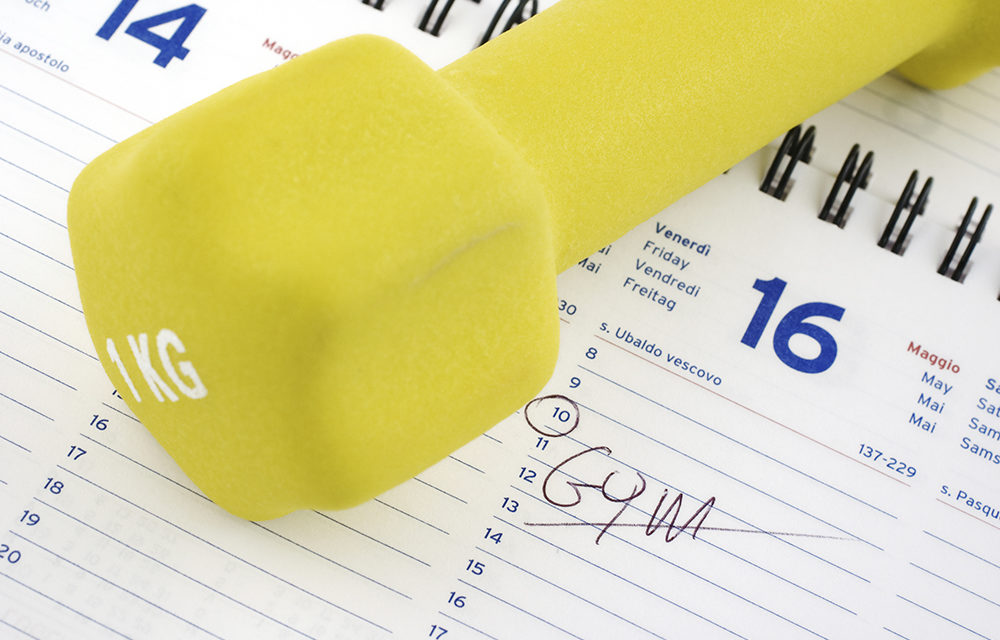Good morning everyone and as always, happy Thursday.
Over the past month I have outlined the weekly exercise schedules I give to my client who will be able to workout twice a week, three times a week and four times a week. And today, we are going to finish this topic up by covering the schedules I give my clients who are able to workout five and six days a week.
By now I think you all understand the muscular super-compensation model and the ideal timing frequency for hitting your muscles, so I won’t go over them again, (if you do need a quick review click here). Otherwise, I’ll just jump right into my recommendations:
For those of you who are able to exercise five times a week, my personal favorite exercise schedule is to workout three days in a row, take one day off, then workout two more days in a row by using the following workout split:
Day 1: Lower Body
Day 2: Upper Body Push
Day 3: Upper Body Pull
Day 4: Rest
Day 5: Lower Body
Day 6: Upper Body
Day 7: Rest
Now, when I outline this split to my clients I usually get a few common questions, so let me take a second to answer them.
Question 1:
Why not use a traditional body builder split like the following… (Or something similar to the following…)?
Day 1: Front of legs
Day 2: Chest
Day 3: Back
Day 4: Rest
Day 5: Back of legs
Day 6: Shoulders and arms.
Day 7: Rest
Answer:
(As I’ve explained within my last three weekly newsletters) I don’t feel that this style of workout split will enable you to hit your muscle groups frequently enough. Based on my experience and the studies I am familiar with, for the general public (including advanced lifters within the general public), it is ideal to exercise your muscles twice per week to maximize their strength and size gains. Following the split outlined directly above only enables you to exercise each muscle group once per week.
Question 2:
What are an upper body ‘push day’ and an upper body ‘pull day’?
Answer:
An upper body push day is a day in which you perform exercises where you are pushing weights away from you. Another way to think of this day is a chest, shoulders and triceps day.
For instance, you would do exercises like bench press, incline press, decline press, dips, shoulder press, triceps extensions and skull crushers.
And a pull day is a day in which you are performing exercises where you pull weights towards you. Another way to think of this day is a back, biceps, and forearms days.
So you would do exercise such as your row variations, pull ups, lat pull downs and bicep curls, as well.
Question 3:
Why did you choose to do a full upper body day on day 6, instead of just circling back to the upper body push day, continuing onto the next week from there and having your workout split look like the following?:
Week1:
Day 1: Lower body
Day 2: Upper body push
Day 3: Upper body pull
Day 4: Rest
Day 5: Lower body
Day 6: Upper body push
Day 7: Rest.
Week 2:
Day 1: Upper body pull
Day 2: Lower Body
Day 3: Upper Body push.
Day 4: Rest
Day 5: Upper body pull
Day 6: Lower body
Day 7: Rest
Week 3:
Day 1: Upper body push
Day 2: Upper body pull
Day 3: Lower body
Day 4: Rest
Day 5: Upper body push
Day 6: Upper body pull
Day 7: Rest
Answer:
Because when you use this split, each week one of the three muscle groups (lower body muscles, upper body pushing muscles or upper body pulling muscles) is only worked once per week. But by using a full upper body day on Day 6, you ensure all your muscle groups get hit twice a week. And to hammer this point home again – for individuals training naturally (as in without steroids or testosterone supplementation) the studies I am familiar with – indicate that increased exercise frequency is vital for muscular development.
Question 4:
Why did you slit up your upper body day into push / pull days as opposed to another way such as chest and back / shoulders and arms?
Answer:
You could split your upper body day up into a chest and back / arms and shoulder days, but I prefer the push / pull split because your triceps and shoulders are going to get worked hard doing a lot of chest exercise. For instance the front of your shoulders and triceps are used a lot in all of your flat bench, incline bench and decline bench variations, as well as during dips.
And you work your biceps and to a degree the back of your shoulders, when doing your pulling / back exercises like seated rows, dumbbell rows, pull ups and lat pull downs.
So if you did a chest and back day followed by a shoulders and arms day you would end up using the front of your shoulders, the back of your shoulders, your biceps, your forearms and your triceps two days in a row. And I believe that this is not enough time for these muscles to adequately recover and prepare for their next workout.
And if you don’t give your muscles enough time to recover between workouts, you’ll undermine their growth and put them at risk for injury.
Okay, that wraps up my suggestions for a 5 day a week split.
Let’s quickly bang out my favorite suggestion for how to set up a 6 day a week split.
If you are going to be exercising 6 days a week, here is the split I recommend:
Day 1: Lower body
Day 2: Upper body push
Day 3: Upper body pull
Day 4: Lower body
Day 5: Upper body push
Day 6: Upper body pull
Day 7: Rest
Why this split?
Because this split enables you to hit each of your muscle groups twice per week while giving each muscle group enough time to adequately recover between each of their specific workout sessions.
Okay, that’s it for today and for our month long exploration of workout splits.
Have a great weekend and I’ll see you all back here next week.
To our health!
Zach





